A big earthquake followed with deadly Tsunami has just rock Japan, especially at Sendai, Honshu Island on March 11th 2011. The biggest earthquake, 8.9 magnitude, to hit Japan in 140 years struck Friday, triggering a 10-metre tsunami that pounded the country’s east coast and prompted advisories along Canada’s West Coast.
A 10-meter tsunami was observed at Sendai airport in Miyagi prefecture, which has been flooded, with waves sweeping along cars and buildings as they traveled inland.
Bullet train services to northern Japan were halted, rapid transit services in Tokyo were suspended and some nuclear power plants automatically shut themselves down.
Prime Minister Naoto Kan believed that there had been no radiation leaks to the best of his knowledge and in a televised address, he extended his sympathy to the victims of the disaster and said an emergency response headquarters had been set up.
Tsunami warning soon be released to more than 20 countries including Indonesia, Australia, New Zealand, and Taiwan. Don't play and estimate the Tsunami hits. Still fresh in our mind a massive Tsunami crashed Aceh, Indonesia last 2004 and killed more than 100.000 peoples.
How many victims in Sendai Tsunami ?
Hundreds were believed to be dead following the disaster, and the extent of the destruction along a lengthy stretch of Japan’s coastline suggested the toll could rise significantly.
The Red Cross in Geneva said the wall of water was higher than some Pacific islands and a tsunami warning was issued for almost the entire Pacific basin.
Another unnerving report was that the Japanese government had ordered the evacuation affecting 2,000 residents near a nuclear plant in Fukushima.
Earlier the government declared an atomic power emergency but said no radiation leaks were detected among its reactors. The plant had shut down but a reactor cooling system failure had led to the evacuation order.
The quake was the biggest since records began 140 years ago, according to the Japan Meteorological Agency. It surpasses the Great Kanto quake of Sept. 1, 1923, which had a magnitude of 7.9 and killed more than 140,000 people in the Tokyo area.
The 1995 Kobe quake caused $100 billion in damage and was the most expensive natural disaster in history. Economic damage from the 2004 Indian Ocean tsunami was estimated at about $10 billion.
Sendai and Tokyo Tsunami and Earthquake

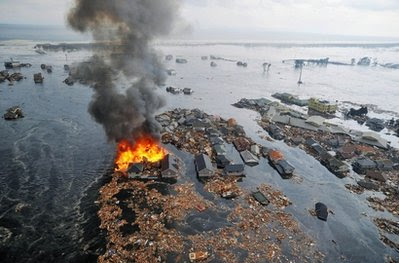


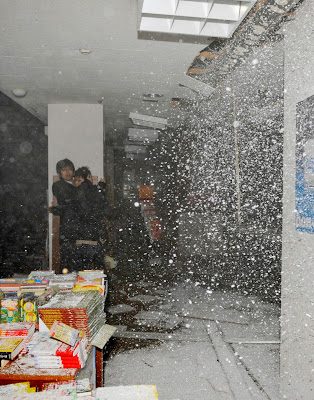
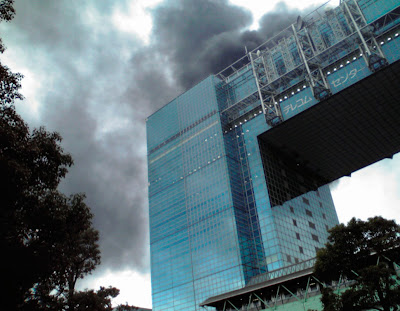
Watch Japan Sendai Tsunami and Earthquake at (March 11, 2011) Video here
Japan Tokyo Escort Nightlife Bars KTV Disco Pub Massage Sauna
Japan Tokyo City Travel Soapland Escort Girl Nightlife Pubs Discos Bars Ktv Lounge Osaka Kyoto Kobe Yokohama Sakae Beer Services Massage Sauna Honshu Shibuya Directory Hotel Motel Jepun Bispak Bisyar Sakura Danceclubs Photos Review Travellers Blog
Japan Escort Girl Nightlife Bars City
Jumat, 11 Maret 2011
Earthquake and Tsunami hits Sendai and Tokyo
Selasa, 14 September 2010
Toyohashi Japan Toyota Motor Company City
Toyohashi (豊橋市) is a Japan city located in Aichi Prefecture in Honshu Island. Actually, Toyohashi is the center point between Tokyo and Osaka. Toyohashi is famous for its Autmobile Company as The Toyota Motor Company has its productiion facility in the nearby city of Tahara. Toyohashi, formerly called Yoshida, is 70 km south east of Nagoya.
Toyohashi has an important rail hub connecting Aichi, Nagano and Shizuoka Prefectures. With a population about 380.000, Toyohashi is Japan largest port for the export/import of motor vechiles.
Toyohashi Tourism
Toyohashi is a small city, therefore not so many things to see there. Many visitors are more attracted to visit Tokyo, Nagoya, or Osaka.
But nowadays, the popularity of Toyohashi is increasing a lot. The most famous sites including Yoshida Castle, Toyohashi Zoo and Botanical Gardens , and Toyohashi Museum of Natural History.
Many of Toyohashi's places of interest are located near to to Shiyakushomae (City Hall) - a short streetcar ride from Toyohashi Station.
The striking 1930s Romanesque-style Public Hall has become a symbol of the city and is built in an unusual fashion for a civic building in Japan.
The nearby Haristos Orthodox Church (built in 1913) also deserves a mention and it is possible to view the church's impressive icons inside the building. There are also both Catholic and Anglican churches located close to the City Hall.
From there it is a short walk to the pleasant Toyohashi Park and Yoshida Castle on the banks of the Toyokawa River.
Yoshida Castle was first built in 1505 by Makino Kohaku, but all that remains is a corner keep that was restored in 1954. The castle was taken over by the feudal lord Ikeda Terumasu in 1590, who began a grandiose rebuilding scheme, but the castle was never completed. The keep is free to enter and there are good views out over the Toyokawa River. The grounds of the park were used as an Imperial Army barracks during the Meiji period and a Meiji-era sentry box and gate are evidence of that period. Toyohashi Park is also a favored cherry blossom viewing spot in season.
Also in the park are the Sannomaru Kaikan - a tea room for performing the tea ceremony and the Toyohashi City Art Museum, which has exhibits of local history and more modern temporary art exhibitions.
It's possible to walk on the southern banks of the Toyokawa River even as far as the Toyokawa Bridge about 4km in all and then across the bridge to the Maeshiba Tomyodai (Tomeidai) - one of Japan's oldest wooden lighthouses. On the way is Minatomachi Koen, with the pleasant nearby shrine Minatoshinmeisha Shrine.
Another historical building in Toyohashi well worth seeing is the Edo Period Futagawa-juku. This large inn or honjin on the Tokaiko highway was built for lords and high-ranking officials traveling along the route between Kyoto and Edo (modern-day Tokyo). The building has been restored and its possible to visit the garden and rooms where the rich and powerful of the day would stay. There is an adjacent museum with exhibits on the history of the Tokaido.
Tel: 0532 41 8580
The nearest station is Futagawa on the JR Tokaido Main Line.
Across the Toyokawa River are the much older Urigo Ruins where there is a reconstruction of a Yayoi Period (300 BCE - 300 CE) "dug-out" style dwelling.
Toyohashi Museum of Natural History
The Toyohashi Museum of Natural History opened in 1988 to commemorate the 80th anniversary of the establishment of the Toyohashi municipal government.
It was established under the themes of evolution and natural history.
The museum aims to promote better understanding of nature and life by broadening knowledge and deepening familiarity with nature.
Yoshida Castle
Yoshida Castle was originally built by the order of a feudal lord, Kohaku Makino in 1505 under the name of Imahashi Castle. It was occupied by many feudal lords in the Warring States period. The castle name was changed later to Yoshida Castle and Terumasa Ikeda occupied the castle after Hideyoshi Toyotomi had control over all Japan. The castle itself was changed from a middle age castle to a modern castle. Currently, the ruins of the turret remain in the north side of the park near the Toyogawa River. People may see the old image of the castle in the reproduced turret iron tower and engraved rock walls. A Green tea ceremony is served in a standing manner at Sannomaru Kaikan located at the ruins of the Sannomaru Enclosure. Many large old trees are preserved in Toyohashi Park where Yoshida Castle is located, and the park is loved by the citizens as an oasis of nature where you can see wild birds even though it is located in the town area.
Photos of Toyohashi tourism :
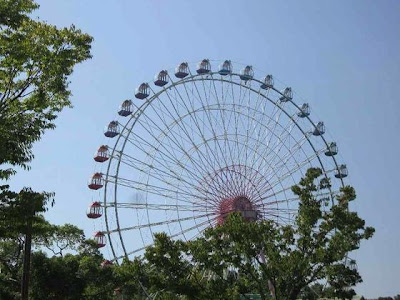
Amusement Park Area in Toyohashi Zoo and Botanical Park. An amusement park area with a roller-coaster, a ferris wheel, 50 meters high, a merry-go-round and even shooting coaster ride.
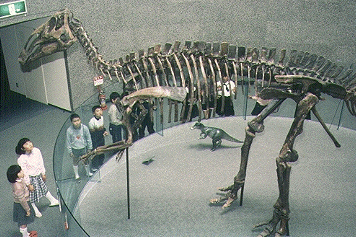
Toyohashi Museum of Natural History. The Toyohashi Museum of Natural History opened in 1988 to commemorate the 80th anniversary of the establishment of the Toyohashi municipal government.

Toyohashi Downton
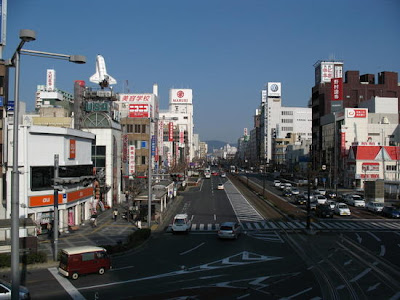
Toyohashi Station

Toyohashi Yoshida Castle
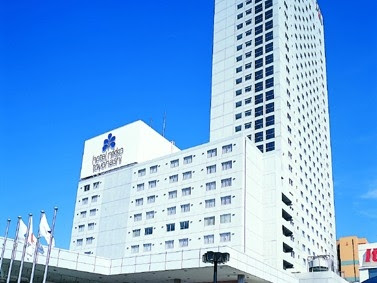
Toyohashi Nikko Hotel
Watch Toyohashi Station Video here
Sabtu, 07 Agustus 2010
Airasia X flight Kuala Lumpur to Tokyo for 14.000 Yen


Good news for Japan lovers, especially who residents at South East Asia. The low cost airlines from Malaysia, Airasia, will serve the flight between Kuala Lumpur to Tokyo Haneda airport by the end of 2010. This news is just like dreams comes true for ASEAN visitor, and many passengers will like Airasia as the company will sell one-way tickets between Kuala Lumpur and Tokyo for as low as 14,000 yen.
Operated by AirAsia X, AirAsia's long-distance airline, the flights between Kuala Lumpur International Airport and Tokyo's Haneda airport will begin at a pace of three per week. The flights are expected to use Airbus SAS' A330 aircraft. The Japanese government has already allotted landing and takeoff slots to AirAsia X at Haneda.
The flight will arrive at Tokyo Haneda Airport, and not Narita Airport. Haneda airport is about 14 km (8.7 mi) south of Tokyo Station.
Airasia seems to be more focus with internation flight between South East Asia and East Asia. Recently, Airasia X also launched the new route between Kuala Lumpur to Seoul.
At present, the cheapest round-trip airfares for Japan-Malaysia flights sell for more than 40,000 yen. Saying that the one-way fare for its flights will likely cost less than a cab ride from Tokyo to Narita International Airport, Fernandes expressed his confidence in the service's success.
Selasa, 06 Juli 2010
Tokachigawa Hot Spring in Obihiro City
Japan is very famous for its hot spring or Onsen. One of the most popular hotspring in Japan is The Tokachigawa hot spring (十勝川温泉), especially in Hokkaido Island. The Tokachigawa Hot Spring is located quite close to Obihiro's urban district and gushes out along the Tokachi River.
Besides Tokachigawa, another hot spring in Hokkaido are Noboribetsu, Yunokawa, Akanko, Kawayu, Utoro, Abashiri, Sounkyo, Asahidake, Jozankei, Asarigawa, Lake Toya.
Tokachigawa Onsen is the best-known and most popular lowland resort in Tokachi. It is located in Otofuke, about 10 kilometres from the centre of Obihiro city, on the north (left) bank of the Tokachi River (Tokachigawa).
Tokachigawa Onsen is a hot spring with mōru baths. The brown-coloured water contains traces of organic material from peat bogs. (The word mōru is a loan word from the German (das Moor) for bog.) Most hotels and inns allow the general public to use their baths.
What’s a “moor hot spring”?
Tokachigawa hot spring is on the Tokachi River in Otofuke Town, in the middle of the Tokachi Plains. The hot spring gushes up through a lignite layer composed of the remnants of reeds and other wild plants that have accumulated over the ages. The moor vegetation makes the water rich in organic components. The waters are milder and richer in natural moisturizers than ordinary hot springs, smoothening and moisturizing the skin and making Tokachigawa hot spring famous as a “hot spring for beauty.”
Tokachigawa Sightseeing
Tokachigawa is not only providing hot springs, but also we can enjoy a natural splendor that’s unique to Hokkaido. Some of Tokachigawa sightseeing such as :
1. Tokachigaoka Park
This park features a vast lawn and fun wooden playground equipment. At its center is a huge flower clock called “Hanack.” Its face is 18 m in diameter, and its second hand is 10.10 m long. For souvenirs and delicious soft-serve ice cream, come to the Welcome Hanack concession stand.
The outdoor cooking area and multipurpose square make this a park that embodies Tokachi’s distinctive magnificence.
2. Tokachigaoka Scenic Viewpoint
This overlook is just up the hill from Tokachigaoka Park. It commands a view of the eternally flowing Tokachi River, the Tokachi hot spring resort, the vast Tokachi Plain, and the faraway Hidaka Mountains. It’s an ideal spot to enjoy lovely sunsets.
3. Swan Viewing Area
4. Footbath
5. Tokachi Farm
6. Row of White Birches
7. Sunflower Fields
8. Ryugetsu Sweetopia Garden
Obihiro and Tokachi are known for confectionery, and Ryugetsu exemplifies the best in the sweets of these areas.
9. Suzuran Park
In early June, pretty lilies of the valley bloom in clusters in this park.
Wild birds, Hokkaido squirrels and other animals live here, and the park is a celebrated cherry-blossom-viewing spot, bustling with visitors every spring.
10. Tokachi Ecology Park
Tokachi Ecology Park was established as a park for environmental education at the Tokachigawa hot spring resort, where forests meet rivers.
Tokachigawa Onsen Daiichi Hotel
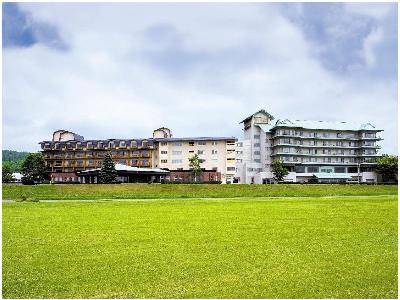
Tokachigawa Onsen Daiichi Hotel. Address : 12-1, Minami, Tokachigawa-onsen, Otofuke-cho, Katou-gun, Hokkaido 080-0263, Japan
There are a lot of hotels that provide hot springs in Tokachigawa, one of the best is Tokachigawa Onsen Daiichi Hotel.
Located along the river of Tokachigawa. In front of the hotel, you can enjoy glorious view of Tokachi's nature. Tokachi Hot spring water will make your skin more beautiful, because it contains plenty of natural moisturizing factor. To offer safety food, we are particular about ingredients, which grown up in Hokkaido and Tokachi. We are proud of our speciality and to make you satisfy. Please enjoy Tokachi by delicious meals and Hot springs.
Why choose Tokachigawa Onsen Daiichi Hotel
1. The hotel is embraced by moor springs, one of Hokkaido's heritages, and the great wilderness of Tokachi
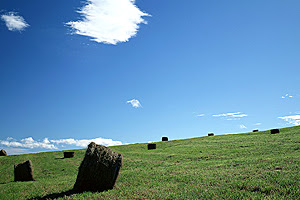
The Tokachi region shines with abundant sunshine and rich soil. The Tokachi River nourishes the fertile soil of Tokachi. The gently flowing Tokachi River creates majestic scenery with the backdrop of the Hidaka and Taisetsu mountain ranges. The scenery of Tokachi is deeply embedded in people's minds.
2. Hoshu-tei Traditional Japanese-style Building

Hoshu-tei is a traditional Japanese-style building. The nostalgic fragrance of tatami mats creates a calm, placid atmosphere that fills the building. The beauty of Japan that has been cherished by the Japanese is available here.
Relax physically and mentally in a Japanese atmosphere. Traditional Japanese-style interior with tatami mats and fusuma doors (thick paper sliding doors) that create the placid atmosphere of old Japan. A guestroom with private outdoor bath available only in Hoshu-tei.
Tokachigawa Onsen Daiichi Hotel Address :
Hoshu-Tei, a traditional Japanese building, and Toyo-Tei, a modern Japanese building
12 Minami, Tokachigawa Onsen, Otofuke-cho, Hokkaido, Japan 080-0263
Tel: +81-155-46-2231
Fax: +81-155-46-2238
Photos of Tokachigawa and Tokachi River sightseeing :
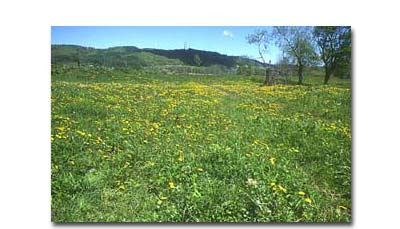
Tokachi Ecology Park was established as a park for environmental education at the Tokachigawa hot spring resort, where forests meet rivers.

Tokachi Nature Center. Enjoy the natural grandeur of Tokachi from riding a canoe, hot-air balloon and even paragliding. Experienced instructors show you how. It’s not every day you have a chance to try these thrilling outdoor sports.

Hot Air Ballooning at Ohibiro City. See a vast panorama from 30m (100 feet) in the air: the Tokachi Plains, Tokachi River, the Hidaka mountains and more!

Whooper Swans, Tokachi River, Hokkaido, Japan

Tokachigawa Hot Spring. This hot springs gushes forth from the ground on the left bank of the Tokachi River in the town of Otofuke, situated in the center of the Tokachi Plain.
Watch Tokachigawa Swan Festival "Sairinka" video
Rabu, 23 Juni 2010
Yatsugatake Mountain at Nagano and Royal Hotel
The Yatsugatake Mountains (八ヶ岳) is one of Japan famous mountains located between Nagano Prefecture and Yamanashi Prefecture on the island of Honshū in Japan. Yatsugatake literally means eight mountains. Actually there are more than eight peaks. Japanese word “hachi” (eight) sometimes implies “many”.
Yatsugatake is one of Japan most visited mountains besides the trademark Mount Fuji and Tateyama which famous for its ski resort.
The Mt. Yatsugatake mountain range with its main peak Mt. Akadake (2,899m) and the 3,000m Southern Alps with the lofty Mt. Kitadake (3,192.6m) make a magnificent, powerful mountain view. The Mt. Yatsugatake area is one of stunning nature that changes in various ways throughout the seasons and is a symbol of Japan’s highland resorts.
Eight mountains in Mt. Yatsugatake have generally pointed out Mt. Aka (2899m), Mt. Gongen (2715m), Nishitake (2398m), and Mt. Amigasa (2524m) of Mt. Tengu (2646m), Mt. Ioh (2760m), Yokodake (2829m), Mt. Amida (2805m), and a dominant peak. As it seems that the portion to Mt. Tateshina located further here north is also contained when it becomes the Mt. Yatsugatake mountain range.
Kiyosato Highland stretches out across the foot of Mt. Yatsugatake, whose peaks range from an altitude of 800m to 1,500m. There are retreats, the best known being Seisen Ryo, hotels, pensions, art museums, restaurants, and at the night you can gaze out at the night sky full of stars – a sight not seen in urban areas.
How to access Mount Yatsugatake
It takes approximately 2 hours from Shinjuku Station in Tokyo to JR Kobuchizawa Station by train (JR Chuo Line), approximately 2 hours by car to Nagasaka I.C. on the Chuo Expressway, or around 2 hours 30 minutes by Chuo Highway Bus from Shinjuku Station West Exit.
It takes approximately 50 minutes by car or around 1 hour by train from the Mt. Yatsugatake area to the Kofu area.
From the Mt. Yatsugatake area to the Isawa area it takes 1 hour 10 minutes by car or 1 hour 15 minutes by train (Fuji Kyuko Line from Otsuki Station (JR Chuo Line)).
To the Fujikawaguchiko area it takes approximately 1 hour 40 minutes by car or 1 hour 50 minutes by train on the Fuji Kyuko Line from Otsuki Station (JR Chuo Line).
Yatsugatake-Chushin-Kogen Quasi-National Park
This wide park that spans both Yamanashi and Nagano prefectures boasts lakes, white birch trees and alpine plants, all encompassing the Yatsugatake peaks at its center. Kiyosato and other highlands, with their pastoral scenery reminiscent of European landscapes, capture the hearts of their many visitors. Stand at the top of 5,059 ft high Utsukushi-Mori, turn 360 degrees, and take in an incredible view including Mt. Fuji, the Minami Alps and Oku-chichibu.
One of top attractions in Yatsugatake-Chushin-Kogen Quasi National Park is Lake Shirakaba-ko. Lake Shirakaba-ko is an artificial lake that is up to 9 meters deep, and 1,416 meters above sea level. It is located at the western foot of Mt. Tateshina-yama in the northern part of Chino City, Nagano Prefecture, and belongs to Yatsugatake Chushin Kogen Quasi-National Park. Visitors can cruise the lake between Mt. Kuruma-yama and Mt. Tateshina-yama by tour boats or pedal boats. You can also enjoy cycling around the roads along the lakeside, and there are camping grounds and ice skating rinks in the vicinity.
Resort Outlets Yatsugatake
Visit Yatsugatake is not only a mountain views matter, but we can also make a shopping. Yatsugatake is also famous for its shopping mall. Resort Outlets Yatsugatake is a shopping mall surrounded by huge mountains and in harmony with nature.
The vast complex is divided into seven areas and all courts have stunning views of Mt.Yatsugatake and The Southern Alps.
There is a large variety of shops such as those selling designer goods, sports and outdoor goods, everyday items, and there are also restaurants. The mall offers stylish fashion and provides a quality shopping space.
Yatsugatake Royal Hotel
One of the most famous hotel in Mount Yatsugatake is Royal Hotel. Yatsugatake Royal Hotel attracts around 20,000 guests each year. The ideal location offers a wonderful view of Japanese major mountains such as Mt Fuji and Yatsugatake, and night-time star watching at the observatory. With a hot spring resort in the facilites, this is one of the leading resort hotels in the prefecture.
It takes 15 minutes on foot or 3 minutes by taxi from Kai-oizumi Station on JR Koumi Line, which runs from Obuchizawa Station on Chuo Line connecting Shinjuku of Tokyo in 120 minutes. The Kiyosato Village, one of the famous resorts, is 15 minutes by car.
Yatsugatake Mountain Photos
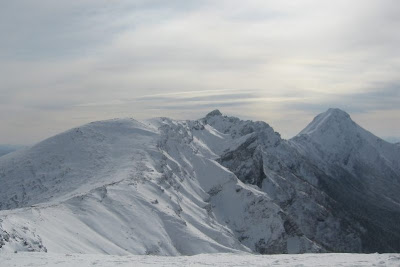
Snow at Yatsugatake Mountain
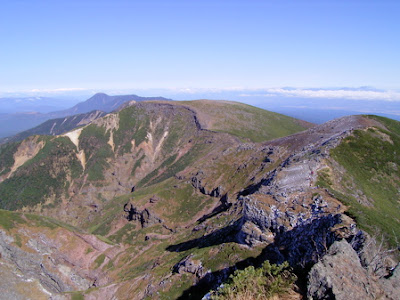
Yatsugatake Peak

Resort Outlets Yatsugatake is a shopping mall surrounded by huge mountains and in harmony with nature.

Lake Shirakaba-ko Yatsugatake is an artificial lake that is up to 9 meters deep, and 1,416 meters above sea level.
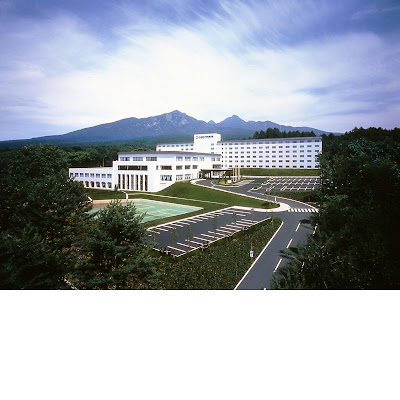
Yatsugatake Royal Hotel. Three minutes by hotel shuttle bus from Kaioizumi Station of JR Koumi Line (Reservation necessary)
20 minutes by the car or taxi from Kobuchizawa station of JR Chuo Honsen line
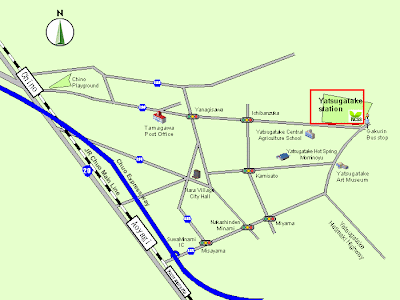
Yatsugatake Station Map. By train : 15-minute by taxi from JR Chuo Main Line Chino station. By car : 10-minute from Chuo Express way Suwa-minamiIC
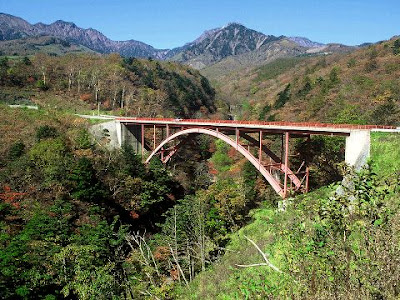
Yatsugatake-Chushin-Kogen Quasi-National Park
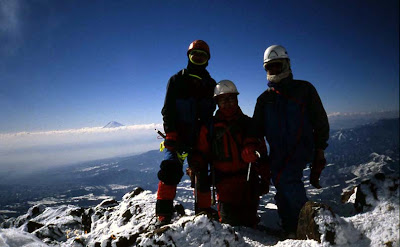
At the top of Yatsugatake-Akadake Climbed through the West Wall Mt. Fuji is seen on the left
Watch Climbing at Sansa Hou Runze, Yatsugatake video here
A very cold ascent of the Sansa Hou Runze route on Yatsugatake on the 20th January 2008.
(Climbers - Alan Tomlinson, Rod Szasz, Tony Grant, Dave Puglisi)
Jumat, 21 Mei 2010
Ferry from Shanghai to Osaka Japan
Japan may be one of many tourist top destination country, but not everyone can visit Japan because of the high cost and incapable of speaking Japanese. A usual tour service usually charge about 2000-3000 USD for travelling inside Japan cities, but not everyone can pay the high cost only for a 7 days tour.
One of alternative way to visit Japan is by ferry from Shanghai. Shanghai, the modern city in China, is the world's third largest port and China's largest seaport. We can use the ferry from Shanghai, cross the East China Sea to Osaka.
'New Jianzhen' is a passenger and cargo ship sailing regularly between Shanghai and Japan. It starts from Shanghai at 13:00 every Saturday, and arrives at Kobe or Osaka Ports of Japan on Monday morning the next week. The ship makes its return voyage from Kobe or Osaka at 12:00 every Tuesday, and it reaches Shanghai on Thursday. The speed of the ship is low, and a round trip usually takes over 80 hours. However there are still many people who choose this liner because of the good environment, excellent service, and low price. A single journey ship passage costs CNY1,300 to CNY2,600 (JPY20,000 to JPY40,000) per person according to the standard of cabin chosen. Alternatively you can pay CNY6,500 (JPY100,000) for a VIP room, which can accommodate two persons. For more information of this liner, you can phone 021-63257642.
'Suzhou' ship also voyages between Shanghai and Osaka in Japan. Starting from Shanghai at 11:00 every Tuesday, it reaches Osaka at 9:00 on Thursday. Every Friday, the ship makes its return at 12:00, and gets to Shanghai on Sunday. The ship passage is almost the same as that of 'New Jianzhen' ship.
When you take an international cruise, you'd better go to the port two hours before departure to conduct the boarding procedures. Ship tickets can be bought or booked at Shanghai International Ferry Co., Ltd. with your passport or other valid identification.
Ticket Office Address: D-G, 15 F, Jin'an Mansion, No.908, East Daming Road, Hongqiao District
Ticket Information Line: 021-65375111
After completion of the whole project, Shanghai Port International Cruise Terminal will have more international passenger liners to facilitate the needs of modern tourism.
How to travel from Shanghai to osaka by Ferry
One- way tickets cost between ¥20,000 and ¥50,000. They offer discounts of up to 40% on return fares and 10% discount is given to students is also available.
Ferry runs weekly between Shanghai and Osaka, Japan. The ferry is having restaurants, a game room, and even karaoke on board, that makes your journey more enjoyable. It leaves from Waihongqiao Harbor every Tuesday at 11 AM and arrives in Osaka at 9 AM the following Thursday.
They recently launched a ship from Shanghai's Waihongqiao Harbor every Saturday, alternating between Osaka and Kobe in Japan. The journey takes approximately two days and tickets for this journey can be booked through the company or through CITS.
Tickets for this ferry can be booked through the company or through China International Travel Service (CITS), the government tourism office.
Website for info about Shanghai-Osaka Ferry
http://www.shinganjin.com/index_e.php
The Shanghai Ferry
4-1-2 Minami Kyuhoji-cho, Chuo-ku
541-0058 Osaka
Tel. +81662436345
pax@shanghai-ferry.co.jp
http://www.shanghai-ferry.co.jp
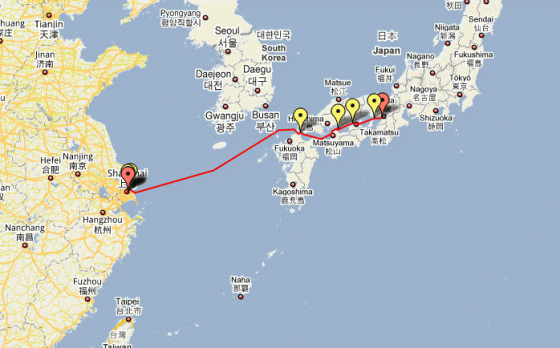
Shanghai to Osaka Map

CHINJIF. Ferry from Shanghai to Osaka Japan
Watch a trip from Shanghai to Osaka Japan ferry video here
Senin, 01 Maret 2010
Omachi Nagano Ski Resort and Lake
Omachi (大町市) is a city near Nagano, and is located north of Matsumoto city, also located in the Nagano prefecture.
Omachi is famous for its Mount Tsubakuro (Tsubakuro-dake). It forms part of the Hida Mountains and is a peak in the Northern Japanese Alps, elevation 2763 m/9065 ft.
Omachi Tourism
There are not so many tourist acctractions in Omachi, but Lake Kizaki may be a popular seaside resort.
Omachi Ski is a fairly small ski location which is recommended for beginner or amateur skiiers.
Yearly there is a horse race festival held nearby the Omachi Track and Field ground, the exact date of the year that this is held is often random but always in august.
During August you can also witness the Yamabiko Matsuri , a festival held on the main street which involves many companies from around the area. During this fesitval you can watch a parade on the main street held by all involved, buy snacks and drinks or join in yourself with the parade. All parade members receive free drink and food from their sponsors.
In september you can visit Kamado Jinya ( Kamado Shrine ). During this festival you can make a wish to God via a small donation to the shrine it's self, and enjoy fireworks in the nearby playing feild. There are also food and drink stands set up around the shrine grounds, as well as games.
New year is also held around several shrines in Omachi city. No food stands are available at this time, the festivities often involve a large fire which many people gather around.
Omachi Hotspring
This hot spring is by the Kashima River where the melted snow water from the mountains of Kashima-Yarigatake and Jiigatake flows into and is found along the Tateyama Kurobe Alpine Route, one of the major mountain routes in the world. Since 1964, spring water is drawn from the Kuzu Hot Spring in the western part of Omachi City. The hot spring resort is indeed quiet, surrounded by white birch and beech forests. Because the area is one of the leading museum towns in the country, you will find many unique types of museums here. For example, there is the Alps Onsen Hakubutsukan where you can learn about the mechanism of hot spring generation and the history of the hot springs of the North Alps focusing on the Omachi Hot Spring as well as the Sake-no-Hakubutsukan where approximately 300 brands of Japanese sake from all parts of the country are exhibited while a local sake tasting/sales area is also set up.
Ski Resort in Omachi
Tourist usually visit Omachi for Ski resort. There are six ski resorts located in Omachi; Yanaba Ski Resort, Omachi Ski Resort, Jiigatake Ski Resort, Sun Alpina Kashimayari Ski Resort, Sun Alpina Keikyu Aoki-ko Ski Resort, and Yanaba Parallel Ski Resort. Easy access to each of these places together with a spa in the surrounding area make this location attractive and enjoyable resort for both skiing and hot springs.
Omachi Ski Resort Information, including the phone number :
1. Yanaba Ski Resort/ 0261-23-1123
2. Omachi Ski Resort/ 0261-23-1022
3. Jiigatake Ski Resort/ 0261-23-7555
4. Sun Alpina Kashimayari Ski Resort/ 0261-23-1231
5. Sun Alpina Keikyu Aoki-ko Ski Resort/ 0261-23-2391
6. Yanaba Parallel Ski Resort/ 0261-23-1123
Omachi Best Attractions including lake, museum, Dam
1. Nishina Sanko (Nishina Three Lakes).
These are the only natural lakes in the North Alps mountains. The biggest is Lake Aoki-ko. Its depth and transparency reflecting Hakuba's three mountains, make it one of the greatest lakes in the country. Lake Kizaki-ko, located southern-most among the three, is the water sports haven. A number of campsites attract the crowds in summer.
2. Shio-no-michi Hakubutsukan (Salt Road Museum)
The house of the Hirabayashi family is open to the public as a museum. Hirabayashi was a salt wholesaler in the Yedo period(1603-1868).
3. Omachi Alpine Museum
The town of Omachi has developed as a mountainous country. The local mountain culture, nurtured in nature is introduced in this museum. The transformation of mountain-climbing throughout its history is explained from various aspects with a number of interesting materials displayed.
4. Sake-no Hakubutsukan (sake museum)
Sake (rice wine) production in this town depends on its blessed rich and fresh headwaters. Five hundred pieces of tools exhibited in the museum proves that the town's reputation as a sake maker. Furthermore, sake making history and culture are described in easy-to-understand narration.
5. Omachi Kyodo-gangu Hakubutsukan (local toy museum)
A collection of local toys from all over the country, including Omachi local toys, is displayed in this museum. The collection (2,400 pieces) represents the heartwarming, humorous, and simple features of local toys from different areas of Japan.
6. Henry Miller Museum of Art
Henry Miller is famous both as a distinguished writer and as a watercolor painter. His bright and leisurely style and daring touch of his works, are the hallmarks of this American genius of the twentieth century. This is the first museum built in the world which is dedicated to Henry Miller. The gallery contains a hundred and ten pieces of his watercolor paintings and lithographs.
7. Takase Ravine (Takase Dam, Nanakura Dam, Omachi Dam)
Takase Ravine consists of three dams; Takase, Nanakura, and Omachi. Takase Dam is the biggest in scale: 176 meters high and 11.59 million cubic meters.
In autumn, the leaves turn red and yellow, which contrasts with the emerald green of the reservoir, and the visitors enjoy its beauty.
8. Nishina-shinmeigu Shrine
Omachi area has been called "Nishina's hometown" since the ancient days. Nishina-shinmeigu Shrine is a national treasure, that was built in early Yedo period (1603-1868). There are many cedar trees along the path to the shrine. Standing at the end of the path is the sanctuary of the shrine. This is one of the oldest sinmei-zukuri ( a style of roof) in Japan.
Photos of Omachi city

Lake Kizaki Omachi
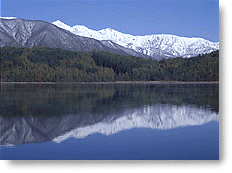
Nishina Sanko Lakes

Aoki Lakespring at Omachi City

Kuroyon Royal Hotel at Omachi. Nestled at the foot of Japan's Northern Alps, this luxurious alpine resort hotel is an ideal location to witness the beauty of nature throughout the seasons. After breathing in the crisp mountain air, we're sure you will want to extend your visit in this relaxing, healthy environment.

Omachi Hot Spring view from Kashima River
Watch Nagano Prefecture Omachi City "gigatake"ski area video here